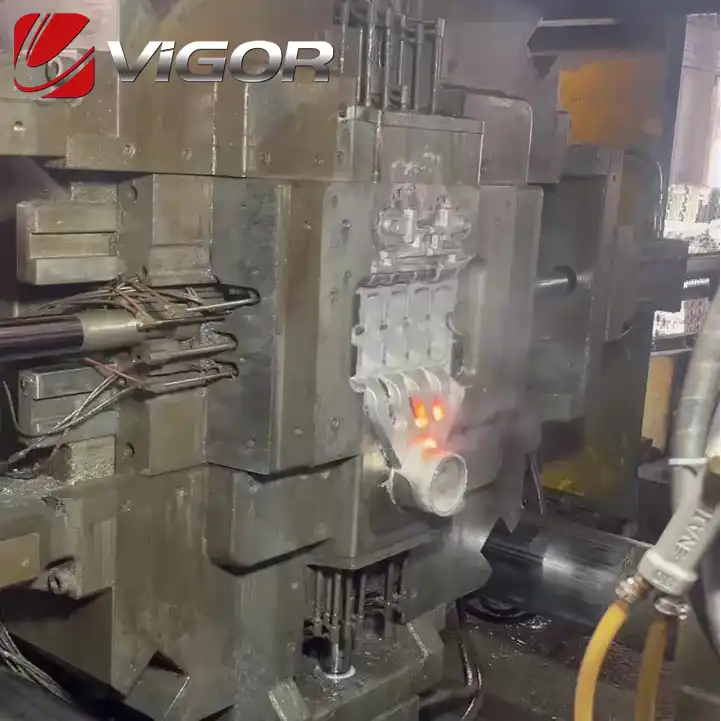
Knowledge
What Is Pressure Die Casting?
Pressure die casting is a metal casting technique that involves injecting molten metal into a mold cavity under pressure. This method is known for producing large quantities of complex, high-precision parts with excellent surface finish and dimensional accuracy, using non-ferrous metals such as aluminum, zinc, and magnesium.
This article discusses pressure die casting in detail, focusing on topics like the different pressure die casting types, their applications, advantages and disadvantages, and so much more.
Pressure die casting is a type of die casting method that makes use of a metal mold (usually made from premium, heat-resistant steel grades) into which a non-ferrous metal, such as aluminum, zinc, lead, magnesium, copper, or tin, is injected or introduced. This process involves forcing molten metal under pressure and high velocity into a mold cavity (die) that is machined into the desired shape. There are two forms of pressure die casting: low-pressure die casting (LPDC) and high-pressure die casting (HPDC). With LPDC, the metal is injected into the mold at low pressures, usually between 2–15 psi. HPDC injects the alloy into the mold at high pressures, usually between 1,500 and 25,400 psi. This metal manufacturing process is suitable for high-volume production of parts that are net-shaped and have tight tolerances.
How Does Pressure Die Casting Work?
Pressure die casting works as follows. Molten metal is forcefully injected under pressure into an engineered closed steel die cavity. This die is composed of two main parts: a stationary half and a moving half, both securely attached to the platens of the die casting machine. On one end, the die casting machine features an injection mechanism that employs both hydraulics and pressurized gas to propel a piston forward, thus pushing the molten metal into the steel die with precision and force. On the opposite end, the machine is equipped with a clamping mechanism that makes use of hydraulics and mechanical toggles. This mechanism is designed to withstand the significant injection pressure, ensuring the die remains firmly closed as the metal part undergoes solidification. This highly efficient process is capable of converting molten metal into a solid, near-net-shape part within mere seconds. With LPDC, the pressure that the system is placed under falls within the range of 2–15 psi, whereas for HPDC, this is between 1,500–25,400 psi. HPDC involves the rapid horizontal injection of alloy into the die through a high-speed ram, taking place within a remarkably short time frame (10–100 ms). In contrast, LPDC operates at a significantly slower pace, employing a more controlled and gentle approach in which inert gas pressure gently forces the alloy upwards into the mold. In both low-pressure and high-pressure die casting processes, the applied pressure is sustained until the metal casting has fully solidified.
China Vigor, a distinguished producer of mechanical equipment, delivers an array of tailored casting solutions to precisely cater to your product requirements. Following the manufacturing process, we conduct exhaustive tests on all products, ensuring they align with both our customers' stipulations and prevailing industrial norms, thereby guaranteeing their suitability for the intended use. We invite you to explore Vigor's mechanical offerings and urge you to contact us without delay to experience superior technical support and secure access to the finest quality products in the marketplace.




